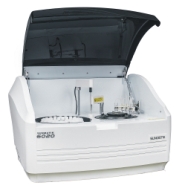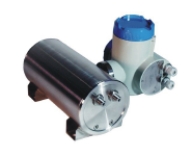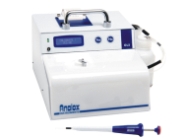Description
Quantitative and semi quantitative detection of peroxidase in milk (ref. no: 82011)
Intended Use of the peroxydase test
This method combines the easiness to quickly check semiquantitatively or to measure quantitatively lactoperoxidase in milk. The persistence of lactoperoxidase activity in pasteurized milk is a good indication of the quality of a product, because only a raw milk of good microbiological quality can be put through a mild pasteurization process in order to not inactivate this enzyme. Oxidase is based on a qualitative (present/not present) method and only indicates whether the thermal process has been performed. Quantifying lactoperoxidase in pasteurized milk enables to determine the nutritional quality of milk. Higher value of peroxidase means that the milk has preserved its original characteristics.
Presentation of the peroxydase test
50 tests/ kit
R1 – 5 mL. (substrate)
R2 – 5 mL. (stabilizer)
R3 – 2,5 mL. (chromogen)
Procedure of the peroxydase test
(Semiquantitative )
1. Collect 100 uL. of milk and dilute with 900 uL. distilled water. Mix and homogenize
2. Collect 250 uL. from the sample mixture
3. Add 100 uL. of R1
4. Add 100 uL. of R2
5. Add 50 uL. of R3
6. Incubate the solution at 55°C for 10 minutes in a water bath or in a dry incubator
7. Read the formed colors and compare with the color chart.
(Quantitative)
Follow the same steps as in semiquantitative method up to step 6.
7. Choose POD from the panel of exams in Electra m2 Unified Analyzer and measure quantitatively the sample



